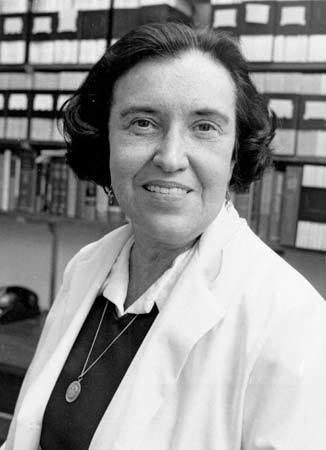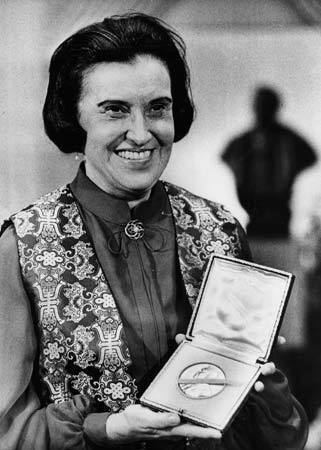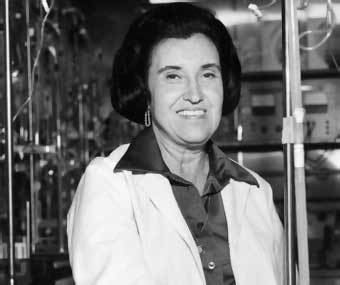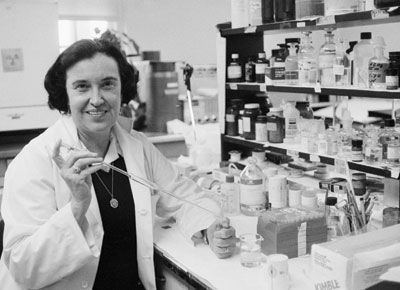Nationality American Role Physicist Name Rosalyn Yalow | Children Benjamin and Elanna Known for Radioimmunoassay (RIA) | |
 | ||
Born Rosalyn SussmanJuly 19, 1921New York City, New York, U.S. ( 1921-07-19 ) Alma mater Hunter CollegeUniversity of Illinois at Urbana–Champaign Notable awards 1972 Dickson Prize1975 AMA Scientific Achievement Award1976 Albert Lasker Award for Basic Medical Research1977 Nobel Prize in Physiology or Medicine1988 National Medal of Science Spouse A. Aaron Yalow (m. 1943; 2 children) Books Women Inventors Honored by the World Intellectual Property Organization Education New York University, Walton High School, Hunter College, University of Illinois at Urbana–Champaign | ||
Rosalyn sussman yalow winner of nobel prize for medicine 7 days of genius msnbc
Rosalyn Sussman Yalow (July 19, 1921 – May 30, 2011) was an American medical physicist, and a co-winner of the 1977 Nobel Prize in Physiology or Medicine (together with Roger Guillemin and Andrew Schally) for development of the radioimmunoassay (RIA) technique. She was the second American woman to be awarded the Nobel Prize Physiology or Medicine after Gerty Cori.
Contents
- Rosalyn sussman yalow winner of nobel prize for medicine 7 days of genius msnbc
- Rosalyn Sussman Yalow Wikipedia audio article
- Biography
- Work
- Awards
- References

Rosalyn Sussman Yalow | Wikipedia audio article
Biography

She was born in Bronx, New York, the daughter of Clara (née Zipper) and Simon Sussman. She attended Walton High School.

Knowing how to type, she won a part-time position as secretary to Dr. Rudolf Schoenheimer, a leading biochemist at Columbia University's College of Physicians and Surgeons. Not believing that any good graduate school would admit and provide financial support to a woman, she took a job as a secretary to Michael Heidelberger, another biochemist at Columbia, who hired her on the condition that she studied stenography. She graduated from Hunter College in January 1941.

In mid-February of that aforementioned year she received an offer of a teaching assistantship in physics at the University of Illinois at Urbana-Champaign with the primary reason being that World War II commenced and many men went off to war and the university decided to offer scholarships for women rather than shut down. That summer she took two tuition-free physics courses under government auspices at New York University. At the University of Illinois, she was the only woman among the department's 400 members, and the first since 1917. She married fellow student Aaron Yalow, the son of a rabbi, in June 1943. They had two children and kept a kosher home. Yalow earned her Ph.D in 1945.
Work
After graduating, Yalow joined the Bronx Veterans Administration Medical Center to help set up its radioisotope service. There she collaborated with Solomon Berson to develop radioimmunoassay (RIA). RIA is a radioisotope tracing technique that allows the measurement of tiny quantities of various biological substances in human blood as well as a multitude of other aqueous fluids.
RIA testing relies on the creation of two reagents. One reagent is a radioactive molecule that is the product of covalently bonding a radioactive isotope atom with a molecule of the target substance (e.g. insulin). The second reagent is an antibody which specifically chemically attaches itself to the target substance when the two are in contact. The initial radioactivity of a mixture of the two reagents is then measured. This radioactive mixture is then added to a measured quantity of fluid (e.g. blood) containing an unknown but usually very low concentration of the target substance. Because the antibodies preferentially attach to non-radioactive molecules, the proportion of radioactive target-antibody links is reduced by an amount proportional to the concentration of the target substance in the fluid. When the final radioactivity of the isolated target-antibody material is measured, the concentration of the target substance (i.e. the amount of insulin in the blood) can be calculated.
Originally used to study insulin levels in diabetes mellitus, the technique has since been applied to hundreds of other substances – including hormones, vitamins and enzymes – all too small to detect previously. Despite its huge commercial potential, Yalow and Berson refused to patent the method.
In 1968, Yalow was appointed Research Professor in the Department of Medicine at Mount Sinai Hospital, where she later became the Solomon Berson Distinguished Professor at Large. Yalow became a distinguished professor at large at the Albert Einstein College of Medicine at Yeshiva University in 1979. In 1981, Yalow became a founding member of the World Cultural Council.
Until the time of her death she continued to reside in the same house in Riverdale that she and her husband purchased after she began working at the Bronx Veterans Administration Medical Center in the 1940s. Her husband, Dr. Aaron Yalow, died in 1992. Rosalyn Yalow died on May 30, 2011, aged 89, in The Bronx from undisclosed causes.
Awards
Yalow was awarded a Fulbright fellowship to Portugal.
In 1972, Yalow was awarded the William S. Middleton Award for Excellence in Research, the highest honor of the VA Medical Center.
In 1975 Yalow and Berson (who had died in 1972) were awarded the AMA Scientific Achievement Award. The following year she became the first female recipient of the Albert Lasker Award for Basic Medical Research.
In 1977 she received the Nobel Prize, together with Roger Guillemin and Andrew V. Schally for her role in devising the radioimmunoassay (RIA) technique that by measuring substances in the human body, that made possible the screening the blood of donors for such diseases as hepatitis among other uses. In 1977 Yalow received the Nobel prize for the invention she and Berson created. Radioimmunoassay (RIA) can be used to measure a multitude of substances found in tiny quantities in fluids within and outside of organisms (such as viruses, drugs and hormones). The list of current possible uses is endless, but specifically, RIA allows blood-donations to be screened for various types of hepatitis. The technique can also be used to identify hormone-related health problems. Further, RIA can be used to detect in the blood many foreign substances including some cancers. Finally, the technique can be used to measure the effectiveness of dose levels of antibiotics and drugs.
She was elected a Fellow of the American Academy of Arts and Sciences in 1978. Yalow received the National Medal of Science in 1988.
